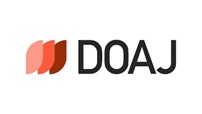Abstract
To overcome the profitability challenge these days, many global banks are increasingly focusing on cost efficiency through more efficient banking processes, such as online and mobile banking, whereas a number of other banks choose to differentiate their services for retaining and attracting the most valuable customer segment (Deloitte, 2011). While global banks in the retail banking industry are adopting either of these two business models as a strategic choice for their long-term growth, KB Kookmin Bank, one of the leading retail banks in South Korea, has begun to operate ‘KB Rockstar’ as a strategic channel, particularly designed to target college students in the youth market. The new marketing strategy has resulted in a positive impact on its brand image in customers` perception as well as a drastic increase in the number of youth customers. In this study, we analyze the case of ‘KB Rockstar’ and summarize the key factors for its success from a marketing perspective. First, ‘KB Rockstar’ is not simply a good channel strategy, but an innovative marketing strategy that aligns place, product and promotion together in order to create a synergy effect, resulting in the successful implementation of the bank`s targeting strategy. Second, the strategy effectively establishes ‘KB Rockstar’ as a brand targeted to youth customers while also competently strengthening the image of the corporate brand, KB Kookmin Bank. The skillful implementation of organically combined marketing mix strategies has enabled the successful launch of the bank`s sub-brand. Third, the strategy considers a retail bank branch as not only the place that makes sales transactions in order to generate short-term profits, but also the place that builds a long-term relationship with customers in order to maximize their lifetime values in the long run.
Recommended Citation
Chung, Hwan; Kim, Sang Young; and Yoo, Chang Jo
(2013)
"Innovative Marketing Channel in the South Korean Retail Banking Industry,"
Asia Marketing Journal: Vol. 15
:
Iss.
1
, Article 2.
Available at: https://doi.org/10.53728/2765-6500.1508
Creative Commons License

This work is licensed under a Creative Commons Attribution 4.0 License.





